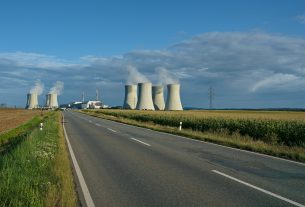
Today, the Commission adopted the annual emission allocations for Member States for 2023, 2024 and 2025. This sets the maximum level of greenhouse gas emissions that each Member State can generate per year in the sectors covered by the European Union’s Effort Sharing legislation.
The legislation enables Member States to share the effort to reduce greenhouse gas emissions in key sectors: domestic transport, buildings, agriculture, small industry, and waste. These sectors are responsible for around 60% of all greenhouse gas emissions in the EU. The remaining emissions are covered by the EU Emission Trading System and the Land use, land use change and forestry (LULUCF) Regulation.
With today’s decision, the Commission has aligned the annual emission allocations for 2023, 2024 and 2025 with the recently agreed, more ambitious national targets for 2030. These will collectively cut the EU’s greenhouse gas emissions in the Effort Sharing sectors by 40% when compared with 2005 levels (the previous 2030 target was a 30% reduction).
Regarding EU achievements so far in the Effort Sharing sectors, greenhouse gas emissions fell by 16.3% between 2005 and 2020, clearly overachieving the target of a 10% reduction under the Effort Sharing Decision. This achievement was the result of a collective effort by Member States, who all complied with the obligations under the Decision.
Next steps
Member States will update their national energy and climate plans for the 2021-2030 decade, setting out the policies and measures to meet their 2030 targets. A first draft of the update is due by 30 June 2023, and the final update is to be submitted to the Commission by 30 June 2024.
Every year, the Commission monitors the progress made and publishes the Climate Action Progress Report (the latest report was published on 26 October 2022). Member States with insufficient progress will need to submit a corrective action plan, detailing the additional actions they will implement to get back on track.
In 2025, the Commission will review the most recent emission data of the years 2021, 2022 and 2023, and determine the Member States’ annual emission allocations for the years 2026-2030, which will ensure we achieve our 2030 target.
Background
The European Green Deal is the EU’s long-term strategy to make Europe climate-neutral by 2050. To reach this legally binding goal, the EU must reduce its emissions by at least 55% by 2030, compared to 1990 levels. Today’s decision is an essential step in that direction.
